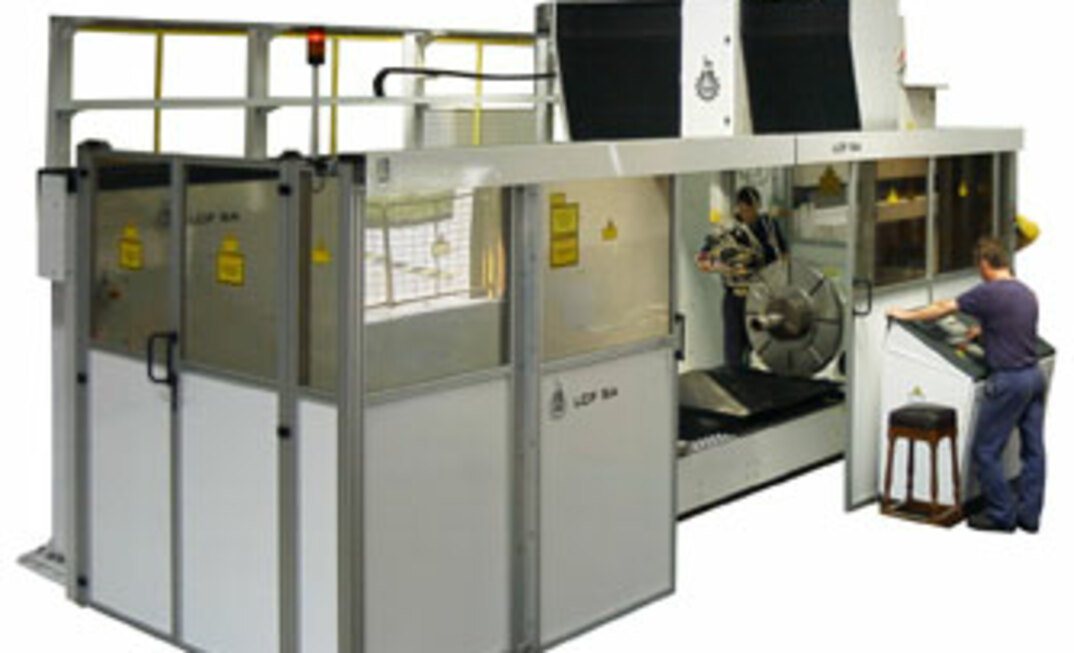In 1999, Jarvie Engineering* invested in two latest technology, European-designed laser cladding machines to compliment its already established business of hydraulic cylinder manufacturing and repair. Jarvie commissioned the two high powered CNC industrial laser systems aiming to meet a need where applications of hard chrome were inadequate, or where bronze plating needed to be refurbished.
The system allows a metallurgically bonded (welded) coating to be applied to the exterior surface of heat sensitive alloy steel components, such as the legs on supports. General manager, Trevor Anderson, said compared to conventional welding processes, laser cladding operates at very low heat input.
It works by feeding atomized metal powder (such as stainless steels, high nickel alloys, cobalt based alloys, or iron chrome alloys), into a co-axial laser cladding head. The laser beam then melts a very thin layer of the component being coated and the metal powder to form a coating on the underlying metal. The maximum thickness of a single pass is 2mm and layers can be built up to any thickness.
Unlike conventional arc welding, there is little mixing of the metals (dilution) – less than 3% typically, versus 15-30% dilution, Anderson said. As a result, the process delivers a metallurgically sound coating with predictable quality. The low heat input provides for a distortion free component, metallurgically superior to those produced by conventional arc welding processes. Obviously critical to the optimal performance of roof supports underground.
While still maintaining the original bulk material properties, sections of the material surface can be tailored to cope with a mixture of specific working environments. Jarvie recently clad a 4140 steel pump shaft sealing diameter with 431 Stainless steel (52 Rc) for wear resistance, and on the same shaft clad an area exposed to salt water with 316L stainless steel.
“Because of the extremely low heat input, the process is very suited to the resurfacing of high cost, closely toleranced, alloy steel components, that are prone to distort, have their bulk properties compromised, or crack when welded,” Anderson said.
The company had an important breakthrough into longwall supports about five years ago when the Wambo mine was receiving inadequate after-sales service after Mitsui withdrew from roof support manufacture. The chrome coating on the two year-old steel legs was lifting off due to substrate water damage from dissolved sulphates and chlorides.
Using its laser cladding process, Jarvie was able to return the legs to OEM dimensions, and select a coating tailored to suit Wambo’s unique conditions. Since then, Jarvie has reclad over 800 roof support cylinders, including legs from Kestrel, Alliance, and many of the legs from the German Creek’s Southern operation.
The most frequent types of cylinders manufactured or re-furbished at Jarvie include:
- leg cylinders for roof supports
- advance rams
- shearer cylinders
“Until this technology was introduced, there has never been a coating process able to restore or reengineer highly stressed alloy steel machined parts to this level of quality,” said Anderson.
* Family owned business, Jarvie Engineering, in Newcastle, NSW was started in 1952 by Bruce Jarvie. Initially founded as a general repetition-engineering workshop, developing highly specialised expertise in the repair and manufacture of hydraulic cylinders.

























